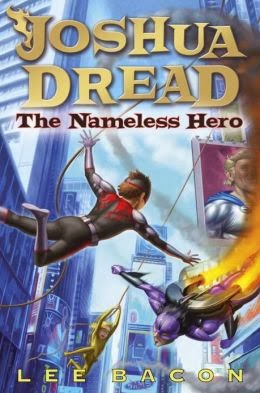Eddie Jaku (text) and Nathaniel Eckstrom (illustrator), The Happiest Boy on Earth, Pan Macmillan, August 2022, 64 pp., RRP $26.99 (hbk), ISBN 9781760985608
 Eddie Jaku was renowned for his book The Happiest Man on Earth, written when he was more than 100 years old. The early part of his life now forms the basis of this picture book, described by the publishers as a ‘picture book for older readers’. The cover shows a happy, untroubled small boy, skating through a snow-covered square in a European setting. This image of the boy is repeated in the opening spread with three other figures denoting stages of Eddie’s life, ending with one showing him as an old man,
Eddie Jaku was renowned for his book The Happiest Man on Earth, written when he was more than 100 years old. The early part of his life now forms the basis of this picture book, described by the publishers as a ‘picture book for older readers’. The cover shows a happy, untroubled small boy, skating through a snow-covered square in a European setting. This image of the boy is repeated in the opening spread with three other figures denoting stages of Eddie’s life, ending with one showing him as an old man,
It is in these later years that the book is set as Eddie welcomes his great-grandchildren into his home and tells them aspects of his early life. It is the story of a happy childhood disrupted by war as Germany becomes more and more under the influence of Nazi rule and life for Jewish families like Eddie’s becomes more and more difficult. The community of Jewish families is alluded to in the text and illustration of Eddie’s mother delivering home-baked challah to neighbours. But gradually even everyday things like bread and eggs become difficult to find and unemployment and inflation increases. Eddie’s schooling is interrupted as laws against Jews tighten. An unfortunate return to his family home leads to Eddie being interned in Auschwitz. He survived partly by making friends with another German Jewish boy called Kurt – and by his ability to work with delicate machinery. After the liberation of the camp, Eddie miraculously re-connects with Kurt and his sister Henni who had also survived the horror of the camps. This led him eventually to Australia and his long life here. He finishes the story by telling the children is was love and kindness that helped him from being the ‘happiest boy on Earth to the happiest man on Earth’.
The illustrations paint a picture of life in the German city of Leipzig before the rise of Nazism and of the fear and hatred that develops under Hitler. As Jaku writes, fear of difference can lead to wars and the double-page spread of a Hitler rally and that of Kristallnacht depict how far hatred of a different people can go. The faces of the men carrying burning torches are distorted with anger. Although Auschwitz isn’t named, we know that is where Eddie was first taken by the illustration of the infamous gate. Again, the equally infamous camp uniform is not detailed in the written text but is depicted in the illustrations enabling the reader to make connections. The last double-page spread is very movingly illustrated with Eddie’s family photographs, making it very clear that the story told happened to real people.
As Holocaust survivors age and die, it is even more important that we preserve their memories and stories and that young people are also aware of that historical episode. This very moving book contributes to that crucial archive. The publishers have teaching notes at their website.
Reviewed by Margot Hillel





